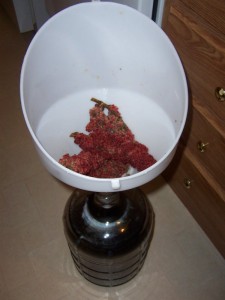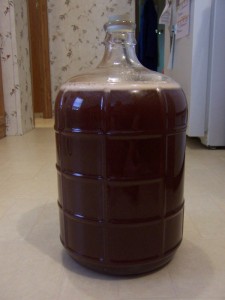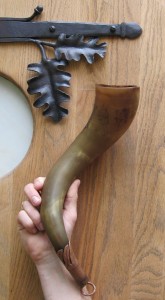I’ve been enjoying the berry mead so much lately, I decided to tweak the brew a bit. This brew differed from my Standard Mead Recipe pretty significantly.
I began with a 2-gallon chaga decoction, as I have done regularly the past several batches. When the decoction was finished, I strained it immediately, then poured the chaga over 3 wild-harvested Staghorn Sumac drupes:
I then let this sit overnight. When I tasted this tea in the morning, I could definitely taste both tartness and tannins, and this was achieved from my local ecosystem! Score!
I then strained the sumac out of the tea:
Once I had this chaga/sumac tea mixture, I could make the mead as normal, expect I don’t need black tea from India or citrus fruit from the tropics. This is a VERY exciting development in my brewing. In addition, this method means I don’t have sumac floating in the must, as I did with the previous blackberry batch.
One other difference, my meads have been very sweet so far. I wanted to make a bit drier mead, so I used the standard gallon of honey, BUT I pulled one cup of honey back out before adding the tea. Since there are 16 cups in a gallon, I used 15 cups of honey in this batch. Let’s see how the dryness is.
For this batch, I used a berry medley with blackberries from my yard, as well as blueberries, raspberries, and strawberries from a farm down the road:
Beautiful!
I then blended the berries together, and strained them into a smooth puree, and added it to the must. I rehydrated the yeast, combined all the ingredients into the carboy, shook it well to oxidize it, and I had a batch of beautiful Wild Berry Mead in which everything but the yeast is local. w00t!
I feel better about this batch than any I’ve done so far. Time will tell!
UPDATE: Finished label, with the new logo:



















